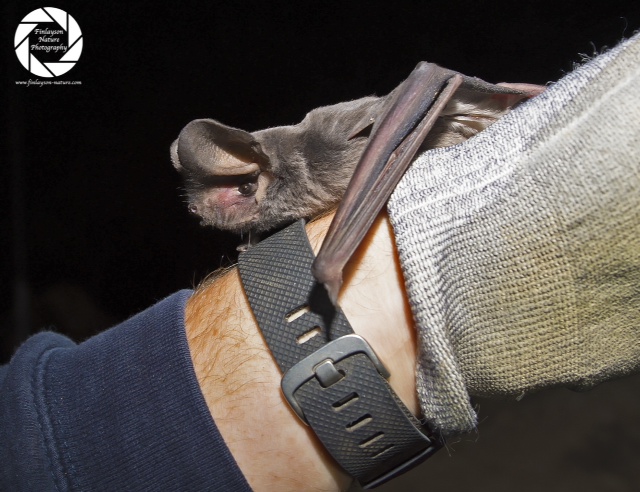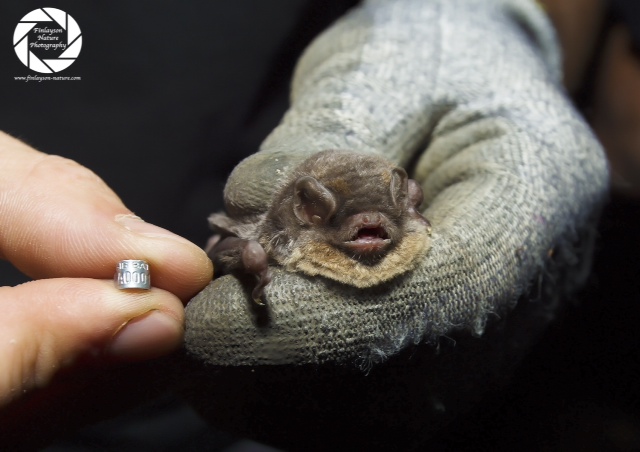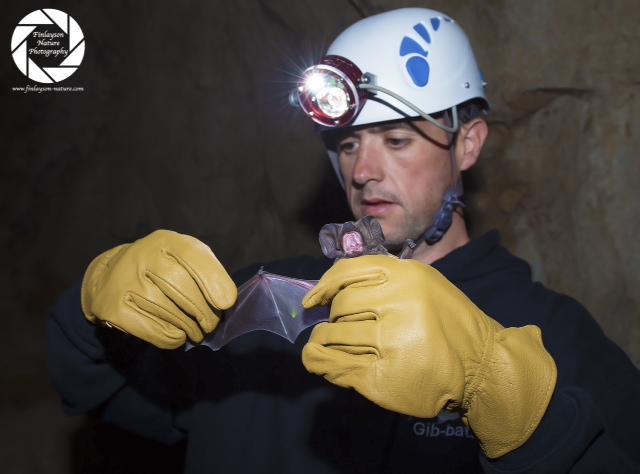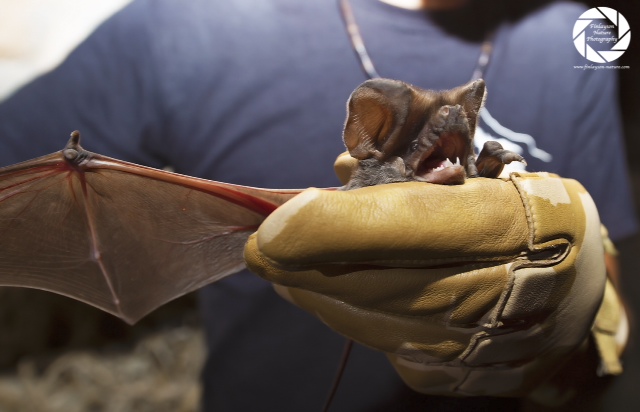Aug 05 - Gorham's Cave Complex Reveals An Elusive Species
 Gib-Bats, a collaborative study of bats in Gibraltar carried out by the Gibraltar Museum and the Gibraltar Ornithological and Natural History Society (GONHS) since 2013 with the full support and assistance of the Department of the Environment has turned a new chapter this past weekend. The team have started a new ringing programme.
Gib-Bats, a collaborative study of bats in Gibraltar carried out by the Gibraltar Museum and the Gibraltar Ornithological and Natural History Society (GONHS) since 2013 with the full support and assistance of the Department of the Environment has turned a new chapter this past weekend. The team have started a new ringing programme.
This programme entails ringing bat species around Gibraltar to try and help understand these animals’ movements within Gibraltar as well as in neighbouring countries. The metal rings which each carry a unique number, are fitted on the bat’s forearm. The number allows an individual bat to be identified in the future, no matter where in the world it may be found.
Stewart Finlayson of the Gibraltar Museum and one of the members of the Gib-Bats team said: “This is a very exciting time for our project. Some species of bats are known to be very long distance travellers, and it is crucial to our work to try and understand where the individuals we are studying are travelling to. It also helps us monitor how often the same individual returns to its local roost and in the long run can give us a good idea of how long these animals live for. Our team is now working very closely with organisations in Spain, Portugal and Morocco and we are hopeful of good results within the next few years."

The local team members were delighted to ring the first bats under James Shipman’s supervision. Ringing is undertaken under strict conditions to ensure a bat’s welfare and under licences issued by the Department of the Environment. All bat species in Gibraltar are protected under the Nature Protection Act 1991.
The team is also now looking into some pioneering work involving VHF and GPS tracking of bats. A tiny device is attached to a bat to collect data on its position, anywhere in the world. These systems have very often been used with birds around Europe yielding some spectacular results in species distribution and migration patterns, and the team is hoping the results with bats will help to better understand whether they are migrating across the Strait to Africa, or north into Iberia.
The intense field sessions over the past few days also yielded a long-anticipated result for the team; its first ever capture of the so-far elusive European free-tailed Bat (Tadarida teniotis).This species was captured during a long night session in Vanguard Cave as part of the team’s contribution towards understanding all aspects of the natural history and heritage of the nominated UNESCO World Heritage Site.
Tyson Lee Holmes, from the Museum’s Bat Unit and also a member of Gib-Bats explained: “It was a relief to finally be able to catch the Free-tailed bats which has proven very difficult to date. This species is abundant in Gibraltar during certain times of the year but is renowned for being challenging to trap. It is a crevice-dwelling species, often roosting in the tiniest of nooks and crannies within inaccessible cliffs and caves, and can fly at high altitudes, rarely stopping at water sources to drink. Our success came at one of Gibraltar’s most important cave sites where we were able to capture three adult males."

James Shipman, the Gib-Bats team leader added: “We are really happy with how our study is progressing, the results speak for themselves. We are working hard to protect Gibraltar's bats, increase public awareness and are encouraged by the support we are receiving. It is inspiring to see the local team’s dedication and hard work that they continue to put into the project."
The team is grateful to HM Government of Gibraltar’s Department of the Environment for its continued support of the study, as well as the Gibraltar Museum and GONHS, without whom this work would have been impossible.
Commenting on these latest findings, Minister for the Environment Dr John Cortes expressed satisfaction at the results. He said: “It is encouraging to see dedicated young Gibraltarian ecologists, under the supervision of bat specialist James Shipman, spending their free time in the long hours of darkness to this work. I have been pleased to personally support this project through my department. Having close links with the Gibraltar Museum and GONHS, it is also gratifying to see collaborative work of this kind for the mutual benefit of all. I am fully committed to ensuring that this close working relationship with the Department of the Environment continues well into the future. In line with the project’s objectives, the Department has also embarked on a number of initiatives aimed at improving the conservation status of bats in Gibraltar such as the installation of bat boxes in key locations, the protection of roosts as well as improving freshwater resources in the Gibraltar Nature Reserve."
Bats in Gibraltar are in desperate need of our help as all species are considered to be in threat of extinction. The team would like to remind members of the public that if they find or see any bats, or have any information or questions, to please contact the team on [email protected] or [email protected]

{fcomment}
Latest News
- Peter J Isola Foundation's 5th Annual Charity Padel Tournament Raises Over £4000 For Cancer Relief Gibraltar
- Chief Minister Writes To Prime Minister Modi And High Commissioner Doraiswami
- Med Steps 5 Challenge Raises £28,900 For Cancer Relief
- 2025 GCS Cultural Awards – Call For Nominations
- Opportunity For Students To Attend UK Political Party Conference This Autumn
- Government Launches New Email Address For Citizen Queries
- Defibrillator Battery Theft At Eastern Beach
- Government Announce Additional Parking For Summer
- Scholarship Awards 2025
- British Forces Gibraltar Celebrate His Majesty King Charles III’s 77th Birthday With Ceremonial Parade In Casemates Square



